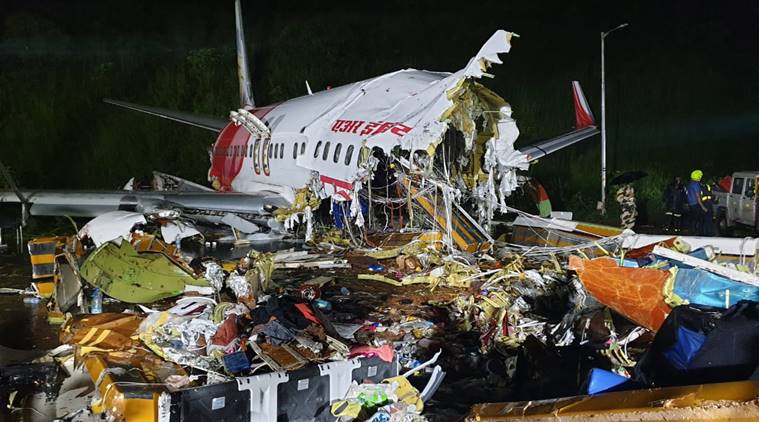
AI pilots warned of bad weather before landing: DGCA chief

Even as investigating agencies are trying to sniff out the reasons that may have caused the Air India Express flight to have crashed at the Kozhikode airport, Director General of Civil Aviation Arun Kumar has said that the pilots were warned about the bad weather conditions in the area and the tailwinds ahead of the landing, reported NDTV.
Amid questions being raised on the safety features of the tabletop runway at the airport, Nair has also clarified in an interview with Hindustan Times that the runway was long enough – a sprawling 9,000 feet in length – for the safe landing of the aircraft and that a late landing may have caused the plane to overshoot the runway.
As many as 18 people (of the 190 passengers) including the plane’s two pilots died after it overshot the runway and fell into a gorge, breaking into three parts.
Kumar said the ATC had warned the pilots about the bad weather conditions and it was the call of the commander to go around or land. He also said that the ATC had alerted aircraft rescue team and firefighters when the plane landed far down the air strip.
He, however, said that only investigation will tell if the aircraft was in touch with the ATC when it fell into the gorge.
“The Flight Data Recorder and the cockpit voice recorder are with the Aircraft Accident Investigation Bureau, which is the designated agency. They are an independent separate agency designated by the Government of India to investigate the aircraft incident. Now they in consultation of the NTSB (National Transportation Safety Board), USA, and an investigative team from the manufacturer Boeing, will investigate and come to a final conclusion,” Kumar told NDTV.
Kumar told HT that a clearer picture of the incident will be available once the concerned investigating agency studies the transcripts of the flight data recorder, the cockpit voice recorder and that of the ATC.
“All we know at this point of time is that the touchdown was late. That is the ATC information, more than 3,000 feet. Actually, if it was 3,000 feet, 4,000 (feet) or 2,000 (feet) — that will come out once everything is decoded. It was a 9,000 feet runway, which is a fairly long runway as I have been saying all along. It’s not a small runway, for example like Patna which is just 6,000 feet. It is a Code D runway and this is a Code C aircraft and the grading is like B, C, D where D is bigger to C. So under the circumstances, it is fit enough or more than fit enough for a Code C aircraft,” he said.
The DGCA has confirmed that the landing of the aircraft more than a kilometre down the length of the runway during heavy rains was a major factor behind the crash. The department is still investigating if the remaining length of the runway was sufficient for the aircraft to have stopped safely.
Kumar also rubbished speculations which have linked the accident to the Kozhikode airport’s tabletop runway. Asserting that one cannot do away with tabletop runways, he cites the example of similar runways in Nepal, US and Europe which are fully functional.
“There are tabletop runways across the world. I reiterate and repeat, it is not an Indian innovation. Tribhuvan International Airport in Kathmandu is also a tabletop, they haven’t closed it down. Similarly, in the US or Europe, all over the world, there are tabletop runways. So what do you do with them? You design flight procedures to navigate your aircraft on these runways. These are very well prescribed and defined procedures. So this isn’t an issue and again 9,000 feet is a fairly long runway,” he told HT.

